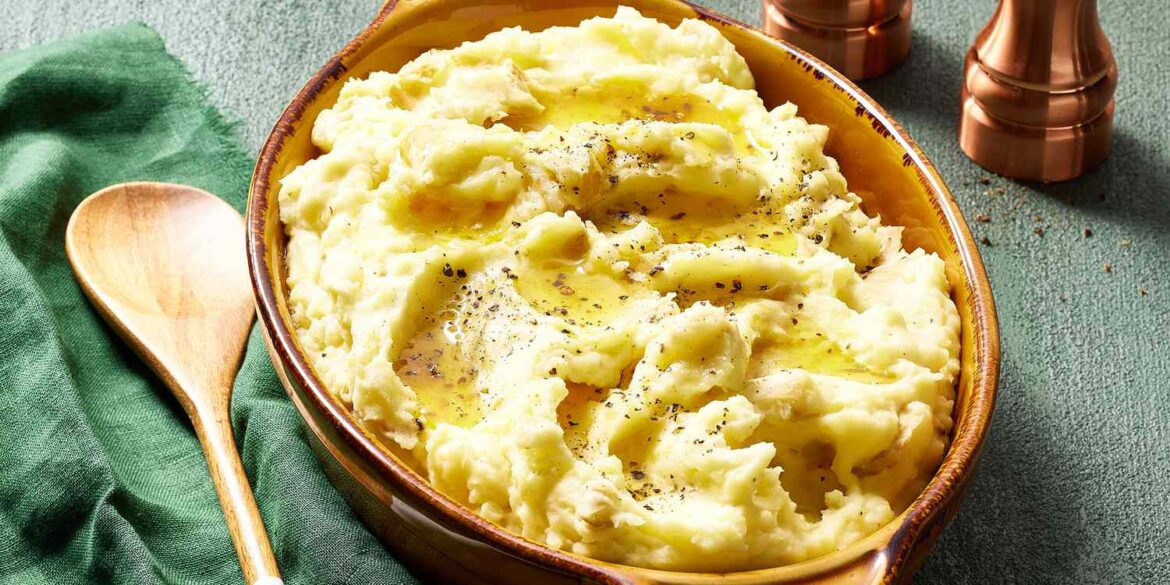I’ve reached that point in my cooking career where I make questionable decisions with complete confidence. Most recently I found myself standing in the kitchen at 7 p.m. on a Tuesday, peeling 5 pounds of potatoes in order to test the veracity of three wildly different “mashed potato secrets.”
One trick involved breaking a fundamental rule I learned in culinary school. Another sounded like something a fancy restaurant would charge extra for. The third? Well, the third made me question my entire relationship with restraint. But one of them—and possibly the most audacious—stole my heart and will forever change the way I make mashed potatoes.
Meet the Tricks
Steep a Parmesan rind in the dairy.
Add butter before milk for extra creaminess.
Stir in Boursin Cheese for rich, herbaceous flavors.
What Makes Great Mashed Potatoes?
Mashed potatoes are a staple around dinner tables on weeknights and holidays alike—simple comfort food that’s the perfect accompaniment to just about any main course. The beauty is in their simplicity: potatoes, milk, butter, and salt. That’s really all you need, which is exactly why technique matters so much.
It’s not the ingredients that make or break mashed potatoes—it’s how we handle them. The best versions manage to ride that perfect line between light and airy, yet velvety and luxurious. We’ve all suffered through the alternative: tough, gluey, dense mashers that sit like a rock in your stomach. That’s exactly what we’re trying to avoid.
How I Judged the Tricks
Flavor: If there’s any dish that is all about one ingredient, it’s mashed potatoes. The best versions taste like potatoes—but ones that are having their best day ever. They should be rich enough to feel indulgent, buttery and well-seasoned without masking the star ingredient. Texture: This is an extremely important component of mashed potatoes, and arguably the easiest one to get wrong. The best mashers are creamy but not dense or gluey. They must be smooth while maintaining a bit of body and should never have the texture of baby food. Appearance: The best mashed potatoes look inviting and luscious. They are creamy, smooth, and lump-free (unless intentionally rustic).
The Results
3rd Place
Fluffy Mashed Potatoes.
Diana Rattray
Trick: Simmer your milk (or cream and butter) with a piece of Parmesan rind while the potatoes cook. Remove the rind and use the infused liquid when mashing. It adds rich, subtle umami depth.
I was really excited to test this theory. I brought my milk to a simmer, added a large hunk of Parmesan rind, turned off the heat and let it infuse for a full hour while I prepped everything else.
The result? I tasted absolutely no difference. In a blind test, my husband (a chef with an impeccable palate) also couldn’t detect any change. I love this trick in theory, but if you want that umami Parmesan flavor, skip the rind ritual and just grate the good stuff right into your finished potatoes where you can actually taste it.
The Runner Up
Lutzflcat
Trick: Mash in room-temperature butter first, then add hot milk. This sequence helps emulsify the potatoes and creates an ultra-velvety result—no need for excessive butter.
This was the trick that made me question my culinary school training. I was taught to warm milk and butter together before adding them to mashed potatoes, but I threw caution to the wind. The science behind adding butter first suggests the fat coats the potatoes, creating a barrier that prevents glueyness. The results? Fine, but dry. I’m sticking with my original method of warming butter and milk together.
The Winner
Meredith Food Studio
Trick: Add crumbled Boursin cheese to your mashed potatoes (along with the usual butter and milk). It melts into a silky, flavorful mixture with herbs.
This was the hack that left me speechless in a way I was not prepared for. The recipe called for a full box of Boursin cheese for four servings. Even for me, a lifelong butter and cream devotee, this seemed unhinged. But I forged ahead, stirring in the entire box of garlic and herb cheese after my milk and butter. The results were fabulous—rich, creamy, and flavorful without any hint of heaviness, which genuinely shocked me. Sometimes the answer isn’t technique or tradition. Sometimes it’s just more cheese than any sane person would use.


Dining and Cooking